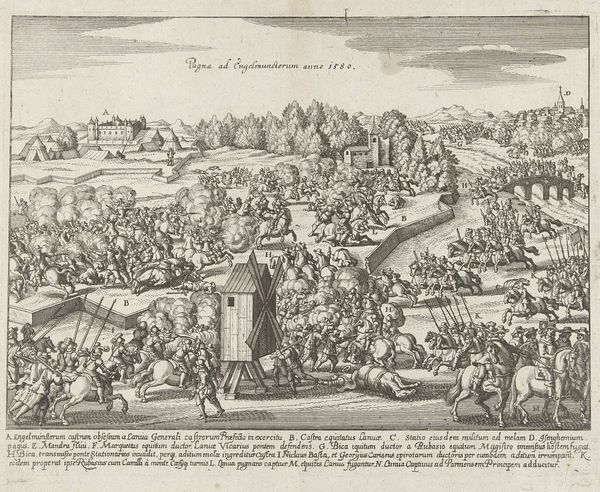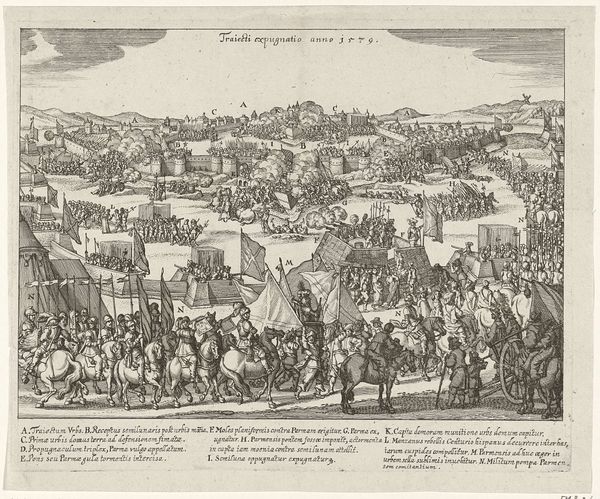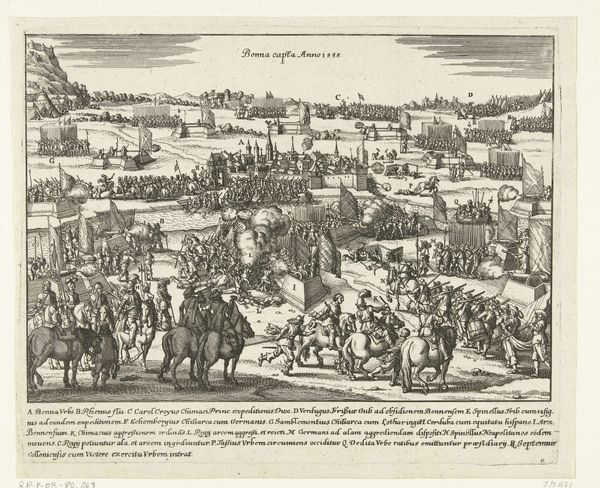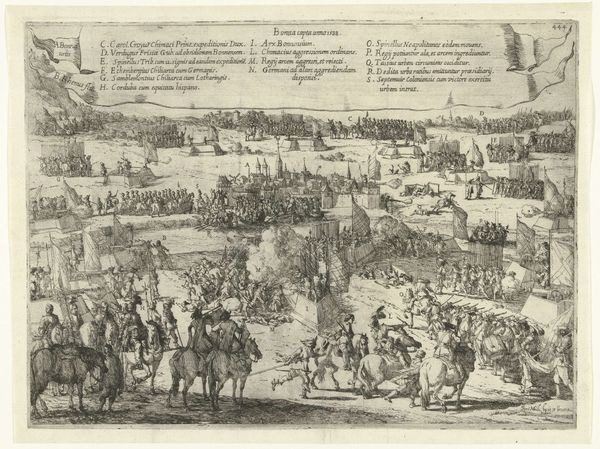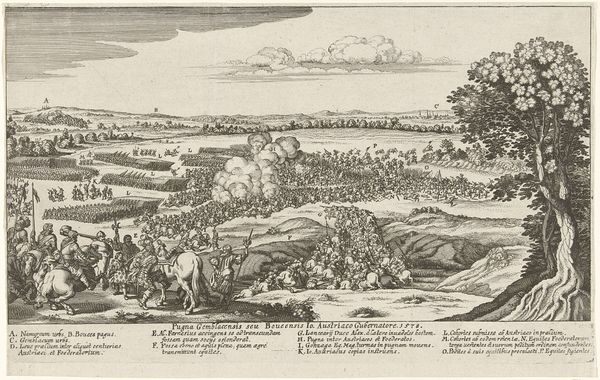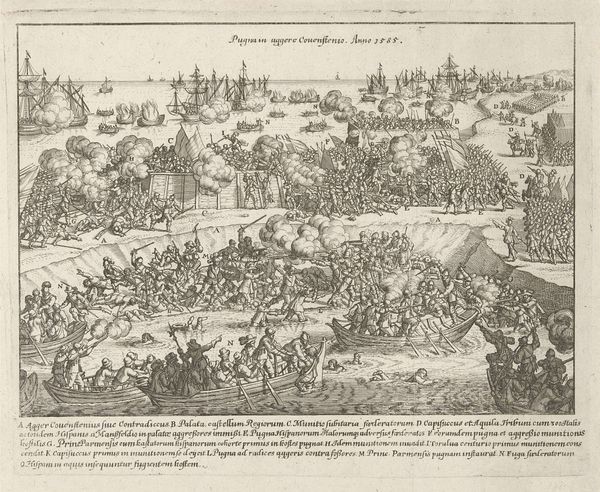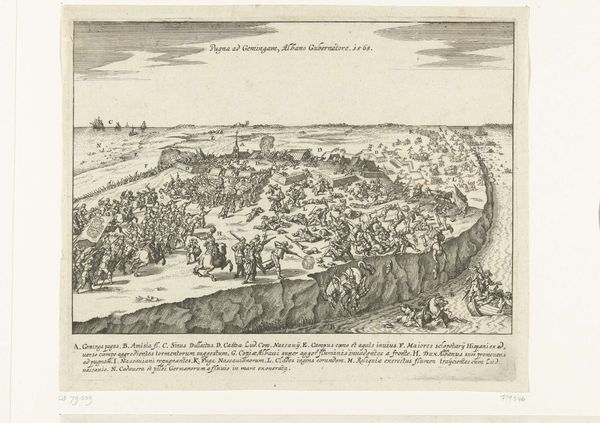
print, engraving
#
narrative-art
#
baroque
# print
#
landscape
#
cityscape
#
history-painting
#
engraving
Dimensions: height 217 mm, width 276 mm
Copyright: Rijks Museum: Open Domain
Curator: Here we have an engraving titled “Inname van Oudenaarde, 1582,” or “Capture of Oudenaarde, 1582,” though it was actually created much later, sometime between 1649 and 1651. It's currently held at the Rijksmuseum. Editor: My first impression is how meticulously detailed the scene is, like an incredibly intricate textile woven with narratives of war. There's a dense, almost overwhelming quality to it. Curator: Yes, that density really speaks to the intent of such images. Engravings like these served as both historical records and vehicles of propaganda. Look closely; see how the artist meticulously details each figure, almost like an icon, to convey very specific roles and identities. Editor: I'm struck by the repetitive depiction of soldiers. It suggests a kind of mass production of warfare itself, each soldier almost a standardized unit within this brutal machine. Consider the labor involved in creating the copper plate—all those precise lines etched to replicate conflict. Curator: Absolutely. The uniforms, weapons, and banners function as emblems, defining the ideological divides within this 16th-century conflict. Note the ways certain figures are highlighted, the more valorous ones posed prominently as counterpoints to the anonymity of others. We see that familiar dichotomy of hero versus faceless soldier, something exploited time and again in art. Editor: And yet the very medium undercuts that narrative. Engraving is inherently a reproductive process, undermining the singularity of the heroic figure. The materiality of the print emphasizes dissemination; this isn’t a unique artwork intended for private contemplation, but a mass-produced artifact meant to circulate widely, shaping public opinion. Curator: It’s about imprinting memory on a broad scale, just like these recurring symbolic markers across the scene—the city walls, cannons, the heraldic devices. They are devices aimed to leave an indelible trace of the event's "truth" in the viewer’s mind, reinforcing a specific reading of history through symbolism. Editor: Perhaps we could consider the ink itself? As a dark, viscous substance poured over the plate, pressed onto paper... a kind of forced inscription upon a passive surface. Like the battle itself being imprinted on the city of Oudenaarde. Curator: An elegant parallel. It’s fascinating to observe how the tangible qualities of the engraving augment its capacity to not just reflect history, but actively shape its perception. Editor: Indeed, looking at this image, I’m reminded of the complex relationship between the material conditions of artmaking and the shaping of collective memory. Thanks for walking me through the intricacies embedded in this early example of print media.
Comments
No comments
Be the first to comment and join the conversation on the ultimate creative platform.
